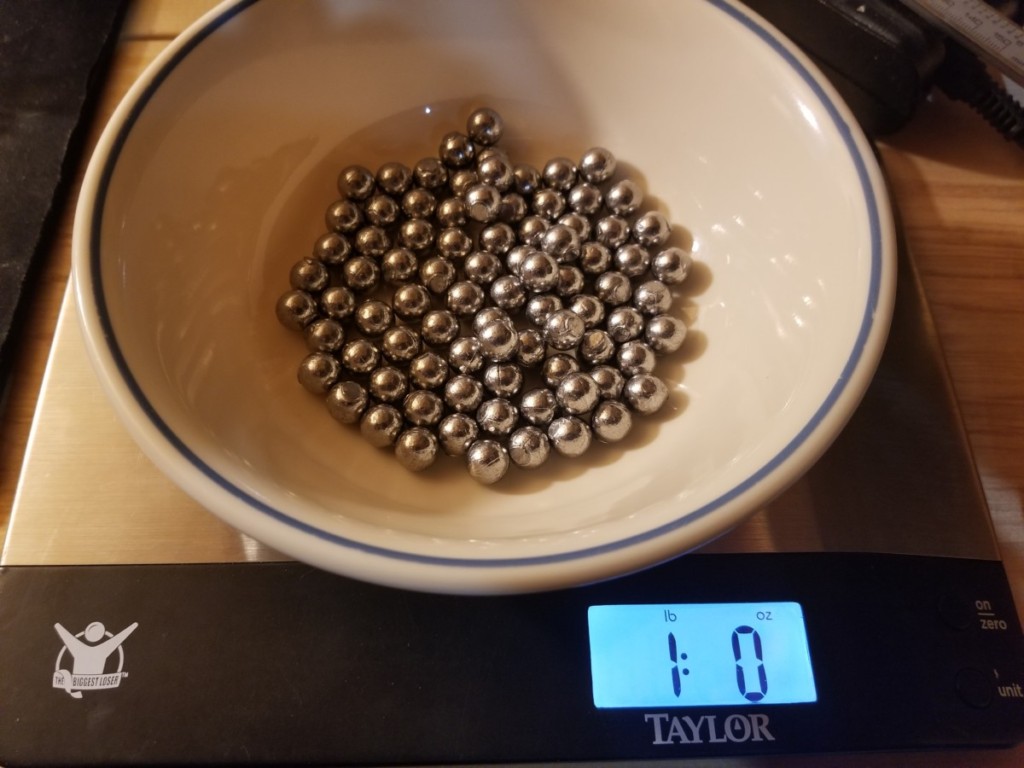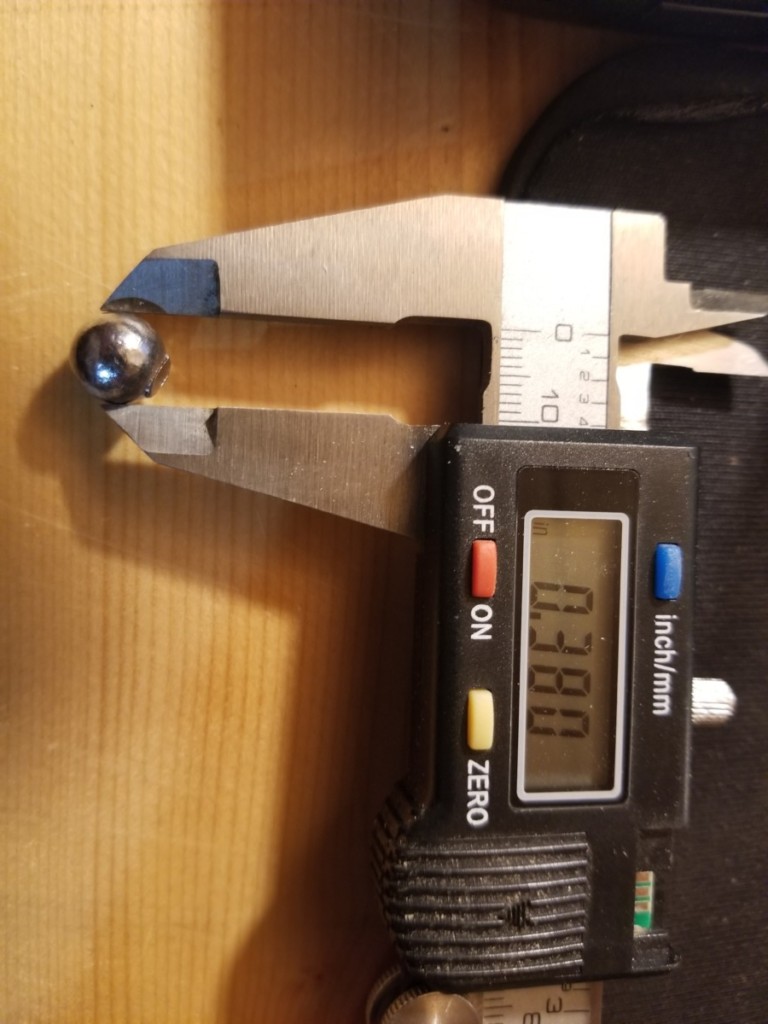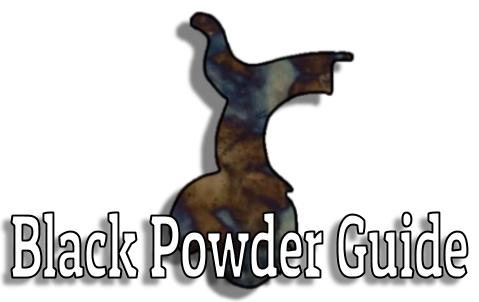The lure and charm about black powder shooting is how relatively easy it is to cast your own lead round balls for hunting and target practice. You need a pot for melting, a skimmer and scoop, a mold, and of course — lead.
Often times, we scrounge and make connections to source our lead supply, and end up with pounds and pounds of it while never really knowing how many round balls we can cast.
I was determined to do the math to find out the answer and I’m excited to share the answer with you as well as the formula in case you have a caliber that is not listed.
The details will be below, but if you’re looking for the quick answer to get a general idea about how many round balls per pound of lead, then here you go!
There are 156 round balls of 32 caliber, 90 round balls of 36 caliber, 50 round balls of 44 caliber, and 38 round balls of 50 caliber in a single pound of soft lead.
Let’s dive right into exactly how many round balls you can expect to cast per pound of lead, how to calculate the number yourself in case you’re using a different diameter round ball than those listed in the table, and what sources make the best lead round balls for cap and ball revolvers.

How Many Round Balls per Pound of Lead
How Many Round Balls from a Pound (lb) of Lead
| Common Black Powder Caliber | Diameter of Round Ball (Inches) | Number of Round Balls per Pound of Lead |
|---|---|---|
| .32 | 0.31" | 156 |
| .36 | 0.36" | 99 |
| .36 | 0.375" | 88 |
| .36 | 0.38" | 85 |
| .40 | 0.395" | 75 |
| .44 | 0.451" | 50 |
| .44 | 0.454" | 49 |
| .45 | 0.44" | 54 |
| .50 | 0.495" | 38 |
| .54 | 0.53" | 31 |
| .58 | 0.575" | 24 |
| .62 | 0.61" | 20 |
| .75 | 0.735" | 11 |
The table speaks for itself and I am confident that it is very close (if not exact) to the actual number. If you want to be conservative, you could decrease each number by 1 or 2.
Want to know how I did it? Let’s look below.
Formula for Number of Round Balls per Pound of Lead
16oz / (Volume of Round Ball / 0.15263297) = Number of Round Balls
I know what you’re thinking. How and why.
Here’s my math for you to follow and it checks out with a known measurement — the 12 gauge shotgun (we’ll get to that in a moment).
First I weighed the round balls that I have at hand. They are 0.38″ in diameter (0.19″ radius) and are for my .36 caliber 1861 Navy Sheriff’s model. I wanted to count how many it took to equal 1 pound, or 16 ounces.

The number came out to 85 round balls.
16oz / 85 = 0.188235294 oz per round ball on average.
I then needed to find the volume of the lead round ball to find the ratio between the volume and the weight.
The volume of a sphere (round ball) is:
V=(4/3)πr^3
So, using the radius of 0.19″, the answer comes out to 0.028730912
For the ratio, we take 0.028730912 / 0.188235294 = 0.15263297
The quotient above is the ratio for the formula highlighted in blue at the beginning of the section.
Now, you simply take the volume of any lead round ball and divide it by that ratio to get the average weight per round ball of that given size. Divide that weight per round ball into 16 ounces and you have your number!
To test it, I took the 12 gauge shotgun. When people hear the term “12 gauge” they immediately know that it’s different than caliber, but most don’t know if it’s just an arbitrary size or if it actually means something.
It does mean something, and here’s how we rate shotguns if you weren’t already aware. If you were to make lead round balls to the size of a 12 gauge shotgun’s bore diameter, you would need 12 of those lead round balls to weigh in at 1 pound. The same thing with a 20 gauge, a 16 gauge, etc.
A 12 gauge shotgun’s bore size is 0.729″ in diameter. Divide that by 2 to get a radius of 0.3645″.
Now, to find the volume of a round ball at that diameter: 0.3645^3 (4/3)π = 0.2028528936
Now, we just use the formula at the beginning.
16 / (0.2028528936 / 0.15263297) = 12.0389
Just under 4 hundredths off from a perfect answer. For all I know, the 12 gauge thing is a close approximate as well. Even if it isn’t, this number is close enough. That’s close enough for me and here’s a quick thank you to my 9th grade geometry teachers!
Now, if we want to be clever, we can also just reverse engineer the 12 gauge itself.
16oz / 12 round balls for a 12 gauge shotgun = 1.333333333 ounces per round ball.
0.3645″ radius of a 12 gauge round ball inserted into the formula to calculate volume = 0.2028528936
To calculate the ratio of weight to volume: 0.2028528936 / 1.33333333 = .15213967
That’s mighty close to my ratio of 0.15263297
In the end, I stand by my formula but you are more than welcome to use the ratio derived from a 12 gauge. Just keep in mind, that you’ll also find slightly different answers to the diameter of a 12 gauge shotgun (within hundredths) but it all adds up and my at home method is within that margin of error.
Pure Lead Weight vs. Lead Alloy
Keep in mind that the weights discussed above were with pure lead, or at least very close to it. Once you get into casting your own round balls, you’ll find that you can use soft lead or a lead alloy.
The lead alloy is always going to be harder but will actually weigh less with the same given volume.
To know how pure your lead is, try cutting into it with moderate pressure with your thumbnail. If it gives and you see a distinct score in the metal, then you can be assured that you probably have 99%+ lead.
If, however, you don’t see a score in the metal or it is barely there, you are likely dealing with a lead alloy that is only 95% (greater, or lesser) lead with tin, antimony, etc. added into the mix.
When I made an order for a customer of #0 buckshot (0.319″ diameter), he had ordered a pound of the lead alloy variety, which I sell for cheaper on Ebay.
I counted the round balls needed to equal 1 pound and found that there were 147 round balls inside the bag.
When I cast a batch of the same diameter round balls but used soft, plumber’s lead, I only needed 141 or 142, depending on the bag.
It’s not much of a difference, but it does exist.
Why You’ll Never Get a Perfect Answer in Practice When Casting Lead
In theory, we can have a formula all we want to tell is how much usable ammunition we will get for a single pound of lead. In practice, you are going to always be right around the same answer but it will always vary within a small margin of error.
This is due to the air pockets that inevitably exist in each and every lead round ball that you will be casting at home. It’s just the nature of the beast when making your own ammo.
Some have small pockets of air, and others have large pockets. The more air within a round ball, the less lead is being used and the higher the number of round balls you will get per pound — as they are less dense.
Some of these pockets are exposed immediately after casting and are thrown back into the pot as rejects. The ones that appear to be solid masses of lead will always have an air pocket inside.
Don’t believe me? Cut one in half that appears perfect and you’ll find a teardrop shaped air pocket somewhere within.
Where to Find Scrap Lead for Black Powder Revolvers
Not all scrap lead is created equal, and you may very well end up with a lead alloy which is inherently harder than pure, soft lead. A harder lead will damage or break your loading lever on your revolver, so you want to exercise caution and only use the soft stuff.
I have an article here that you can check out where I cover why it’s so important to find the right lead, and where the best places are to look.
Thanks for checking out my post. I hope it helped you out on your black powder journey! I would be forever indebted if you find it interesting enough to share! Let’s keep building the hobby together!
